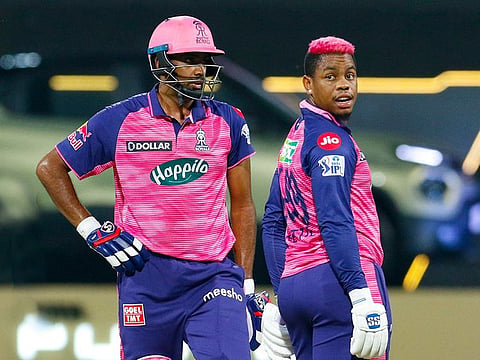IPL 2022: Has Ravi Ashwin’s ‘retired out’ come to stay in T20 cricket?
The takeaway is apart from being a legal step, it can be used as a tactical move

Kolkata: It’s been three days since Ravi Ashwin, the senior Indian spinner who is donning the Rajasthan Royals colours this year, became the first case of ‘retired out’ in IPL. A move which is still creating ripples - with some pundits finding it fascinating while there could be others wondering why they didn’t think about it before.
Interestingly, Ashwin – who enjoys the reputation of being a cerebral cricketer – has been in the thick of two rather contentious action in the history of IPL so far. The first one was in 2019 when as the captain of Punjab Kings (then Kings XI Punjab), he ‘Mankaded’ Jos Buttler – now his teammate in the Pink Army. And now, a move which allowed Riyan Parag – a better finisher – coming out to add eight runs off four deliveries in a game which was won by a three-run margin.
Unlike the retired out dismissal, a major controversy had erupted on the previous occasion as to whether the so-called spirit of the game was violated. Ashwin, himself, was unrepentant as his contention was that the English batter was deriving an unfair advantage by stepping way out of the non-striker’s crease even when the bowler was yet to deliver the ball. The current MCC ruling in early March, which will no longer deem ‘Mankading’ as unfair play as long as the non-striker if caught outside the crease, vindicated Ashwin’s street-smart, albeit controversial stance.
The context is much different here but the takeaway from the incident can have far-reaching consequences in both international and franchise cricket. Given the fact that the T20 is a game of small margins, the introduction of a new batter from the playing XI whom the team management feels is better suited to respond to the situation in the middle (be it in building an innings or increasing the momentum in a chase) is a legal and logical one. Mind you, the outgoing batter’s team is also taking a calculated risk as the new batsman can also take time to get into his groove – and the move well turn out to be counter-productive.
What does the laws of the game say about being retired out? Law 25.4.3 states: ‘’If a batter retires for any reason other than (injury or illness)… the innings of that batter may be resumed only with the consent of the opposing captain. If for any reason his/her innings is not resumed, that batter is to be recorded as ‘Retired – out’.’’
Ashwin’s was hence a case of retired out which Kumar Sangakkara, Royals’ Director of Cricket, clarified was a collective one including Ashwin himself.
One of the most articulate cricketers around, Ashwin later likened it to a substitution in football as he felt T20 is more like a ‘team game’ now. An irrefutable logic and if embraced, can actually add to the ebb and flow of the shortest format.
At best, the practice can be seen as an act of substitution like some other games. It’s certainly not as outrageous as using of a earpiece by the captain of the team to receive instructions from the coach – which the late coach Bob Woolmer used for South Africa in the 1999 ICC World Cup before it was banned by the ICC. Woolmer’s logic on that occasion was that taking such instructions is an accepted practice in North American franchise leagues, but the ICC later responded by banning it.
Ashwin’s move may well be the first ‘retired out’ in IPL, but I doubt if it will be the last!
Sign up for the Daily Briefing
Get the latest news and updates straight to your inbox



